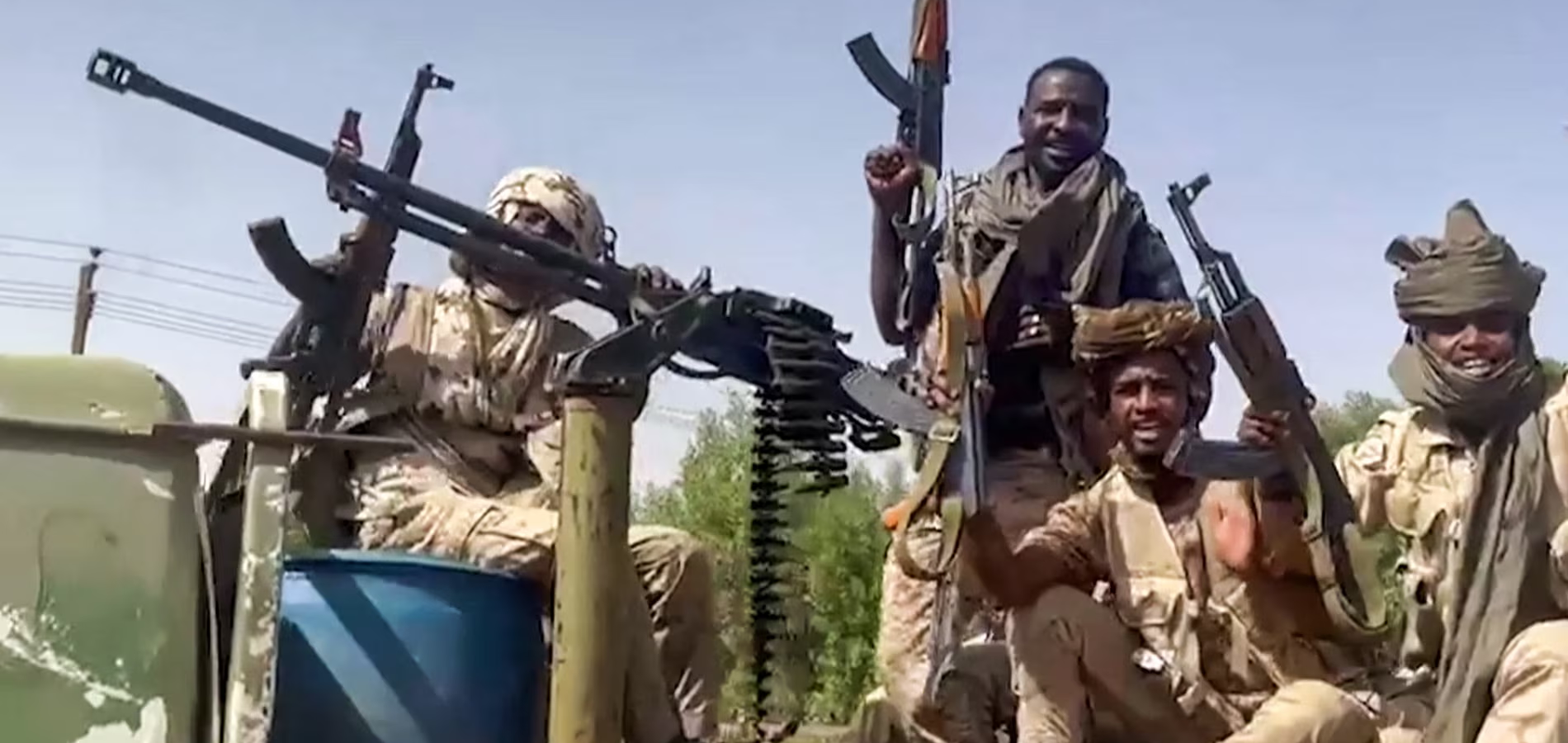Binary terms with overlapped borders
Yeshiwas Degu
The idea of peace as the antithesis of violence and war has long dominated the field of peace studies. Most theorists comprehended these terms as ‘polar extremes’ on a continuum, sharply distinct from one another with their own particular processes and consequences. Hence, approaches to peace and stability are primarily aimed at addressing the forces of violent conflict and war at all levels.
According to the renowned author and analyst on peace and conflict, Charles Webel, peace is not the mere absence of organized use of armed force in a Hobbesian world of unending violent conflict, but it embraces individual liberty, freedom and security, social harmony and justice. For many scholars on the field, this broader understanding makes the term peace quite elusive; and the level of peace the world we live in today enjoys doubtful.
Since the famous contribution by the Norwegian sociologist, mathematician and the founder of the discipline of peace and conflict studies, Johan Galtung, who is also known as the father of peace research, there has been much consensual presumption that the attainment of peace is indispensably to the exclusion of war. It may sound an obvious look into peace and war as binary terms. The question, however, remains will peace-war divide prolong in the years and decades to come where terrorism and counter-terrorism continue to dominate the interaction between state and non-state actors?
As The Global Terrorism Index shows, in 2014 the world has experienced an increase by 61% in terrorist attacks. Likewise, military campaigns against terrorist networks have been boosted globally. To what extent these developments have impacted on the boundaries between peace and war? Technically speaking, are we at peacetime or are we at wartime?
The ongoing global war on terror and the advancement of the modus operandi of terrorist networks are continuously accelerating changes in the nature of warfare and destabilizing the traditional boundaries between peace and war. Although the idea is still in its infancy, it bears great relevance in the theoretical aspect of peace studies.
Terrorism and counter terrorism
Terrorism is a global phenomenon, more so as of late. But it has a long history dating back to the French Revolution (1789-1795). Between1793-1794 under the leadership of Maximilien Robespierre, the Head of the Committee on Public Safety and Revolutionary Tribunal, a large number of people labeled as the “enemies of the state” were put on trial and guillotined and many others were threatened. British statesman Edmund Burke used the term terrorism to describe these state actions.
Nowadays, most often, terrorism is defined as the use or the threat of the use of violence by non-state actors, a method of combat, and a strategy designed to have far-reaching psychological repercussions beyond the immediate victim. Having a devastating impact on the ability of individuals to fully enjoy their civil rights, including their rights to life, liberty and security, terrorism doesn’t confirm with international human rights standards and laws.
It has been increasingly emphasized that terrorism is a dual phenomenon used by states (terrorism from above) and by non-state actors (terrorism from below) to induce fear and terrorize people for certain political, ideological or religious goals. In this regard, peace refers to the absence of anxiety, insecurity and terror that are induced from above and from below.
Since 1960s the international community has been dealing with large scale terrorism and how to minimize the extent of terrorist attacks, eliminating terrorist organizations and undermining terrorist morale. Terrorism was, of course, already a recognized phenomenon; however, it was considered to be on the peace side of the continuum and to be a criminal problem and a matter for law enforcement authorities. States, for the most part, sought to differentiate between terrorism and war.
Attacks on the United States of America (U.S.) on September 11, 2001 have occasioned the reconsideration of its approach in dealing with transnational terrorist networks. Subsequently, the U.S. became aggressively interventionist. In the immediate aftermath of 9/11, President George W. Bush launched a military invation against AI Qaeda. He called it the “war against terrorism.” It represents the emergence of a new era of warfare on terrorist structures operating as non-state transnational actors outside of the existing international laws of war.
The global war on terror, however, further triggered the sophistication and advancement of the modus operandi of terrorist groups and the broadness of terrorist targets (civilians, military basis, historical sites and public infrastructures among others). All these complexities have become increasingly important in clarifying the boundaries between peace and war.
Combatants- non-combatants distinction
The boundary between civilians and combatants is one of the oldest and most hallowed distinctions in the law of armed conflict. The Protocol Additional to the Geneva Conventions of 1949, and relating to the Protection of Victims of International Armed Conflicts of 1977 proclaim that armed conflicts shall at all times distinguish between the civilians and combatants. Accordingly, armed conflicts shall direct their military operations against military targets only. In times of wars, therefore, civilians are normally protected.
Today civilians are the targets of terrorist attacks, violence and war than targets of humanitarian assistance and protection. Whether it is committed by ISIS, Al-Qaeda or Al-shebab civilians are victims both in their countries and abroad. Innocent travelers, hopeful migrants and visionary students were killed, burned alive and beheaded, which constitutes the mainstay of terrorism nowadays. This human cost of terrorism has been felt in virtually every part of the globe.
On the other hand, however, there is still a question on whether or not counter terrorism strategies aim to avoid ‘collateral damage’ and discriminate between combatants and civilians as stated in the UN Counter terrorism strategy.
The Global Counter-Terrorism Strategy adopted by the United Nations (UN) General Assembly (resolution 60/288, 2006) pronounces the promotion and protection of human rights for all; and the rule of law are essential elements to all components of the strategy in fighting terrorist organizations and their networks; it recognizes that effective counter-terrorism measures and the promotion of human rights are not conflicting goals, but complementary and mutually reinforcing. In practice, however, the US led global war on terror through large-scale operation, detection and bombings have killed more civilians than is being admitted and destroyed civilian infrastructures.
The line between noncombatants and combatants is more complicated by the fact that many terrorist networks use civilians to carry out their activities. Most often terrorists do not wear uniforms and openly acknowledge their identities in towns and cities; rather they seek to blend in with civilian populations.
In practice, civilian fear, insecurity and deaths are always induced from above (counter terrorism) and from below (terrorism). The traditional distinction between civilian and military targets and casualties will continue to be obliterated; collective punishment is more likely to become a more accepted practice in the foreseeable future.
Peace and war geographies
It was common to see the geographic location of wars delineated for violent conflict and destruction, leaving no room for civilian peaceful life, and governed by the international law of armed conflict, rather than domestic laws and legislations.
In recent days, we are witnessing the traditional boundaries between peace/non-war and war geographies becoming increasingly irrelevant. The distinction between the geographic areas in which war is occurring and war is not occurring has broken down. This is because the battlefields for terrorist attacks lack a delineated geography; terrorist attacks could happen everywhere including in relatively peaceful areas and civilian spaces. The recent coordinated attacks on Paris bear witness to this.
The distinction between geographies of war and peace in which the law of armed conflict and ordinary domestic law govern respectively, is no longer plausible in light of recent events.
Endless cycle of war and violence
In the aftermath of 9/11 terrorist attacks, America’s then President Bush called for a war against terror until every terrorist group has been defeated. The question remains ‘When?’
By its nature, the war on terrorism is unlikely to end very soon. Since terrorists’ new strategy is to blend in the society and spreading fundamentalism and religious extremism have become a matter of having access to internet, states will face terrorist threats for years and decades to come. Hence, even if existing terrorist organizations dismantled and members apprehended killed and put into trial, there is no time at which any state will be able to announce victory and the end of war on terror.
In the traditional paradigm, war is clearly defined and marked by the formal surrender of the defeated parties or by means of peace agreements. As it stands now, it is highly unlikely to see non-state terrorist networks such as ISIS, al Qaeda or Al shebab formally surrender or enter into peace agreements with nations.
Two crucial justifications validate this idea.
First the world lacks a viable means of formal communication with the leadership of these terrorist organizations.
Second, there is a strong and seemingly rigid principle pronounced by state actors in which they can’t negotiate with terrorists.
What these all mean is that we face the literal prospect of war without end. War is, therefore, waged at the level of the population in and through civilian modalities of life. The anti-terror war is a peace-war: there is no declared beginning and end to the ‘war’ against terror. Thus, the traditional distinction between war and peace is spatially and temporally eliminated.
Conclusion
The changes over the last few decades and the ongoing war on terror necessitate revisiting the peace-war divide and exploring whether they appear to overlap one another in the age of terrorism and counter terrorism. In my view we remain insecure and anxious and far from the war itself. This is because terrorist activities will continue so as anti-terrorist operations. This situation which renders the traditional temporal distinctions between peace and war less salient, paves the way for “peace by peaceful means” to have a diminutive place in addressing terrorist threats. Rather, war-making, otherwise known as global war on terror, little by little presents itself, not as dialectic, but as the continuation of peace by other means backed by the perspective of a just war.
Ed’s Note: Yeshiwas Degu is Lecturer of Peace and Security Studies at College of Law and Governance, Mekelle University. He can be reached at afomuya@yahoo.com







